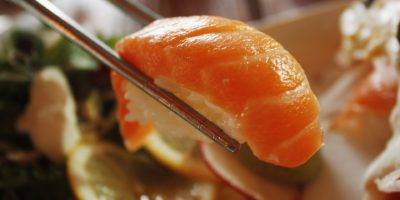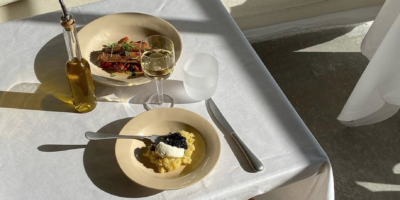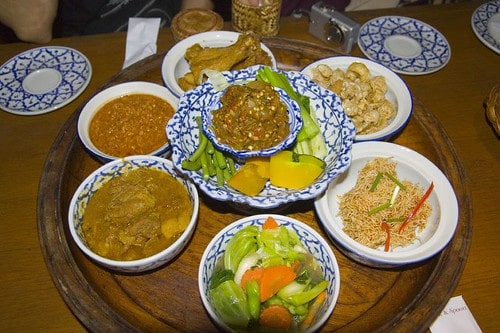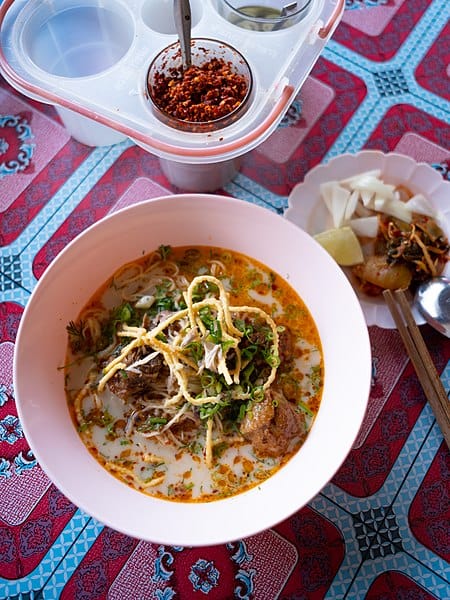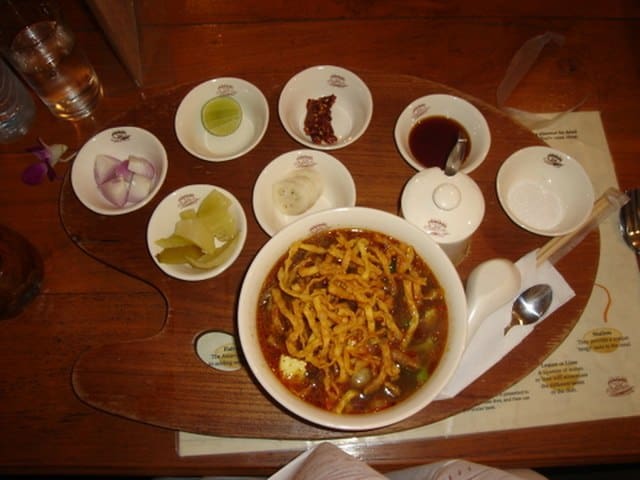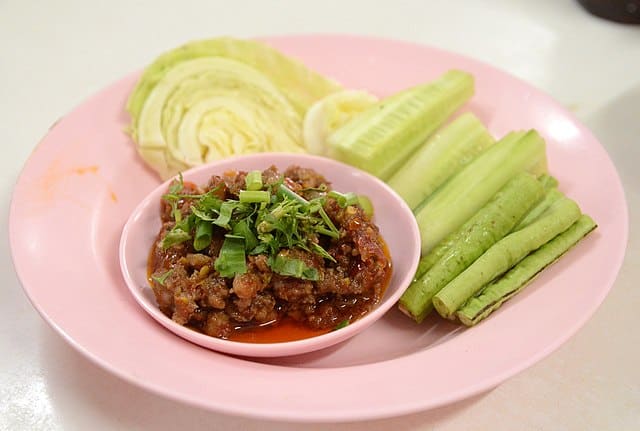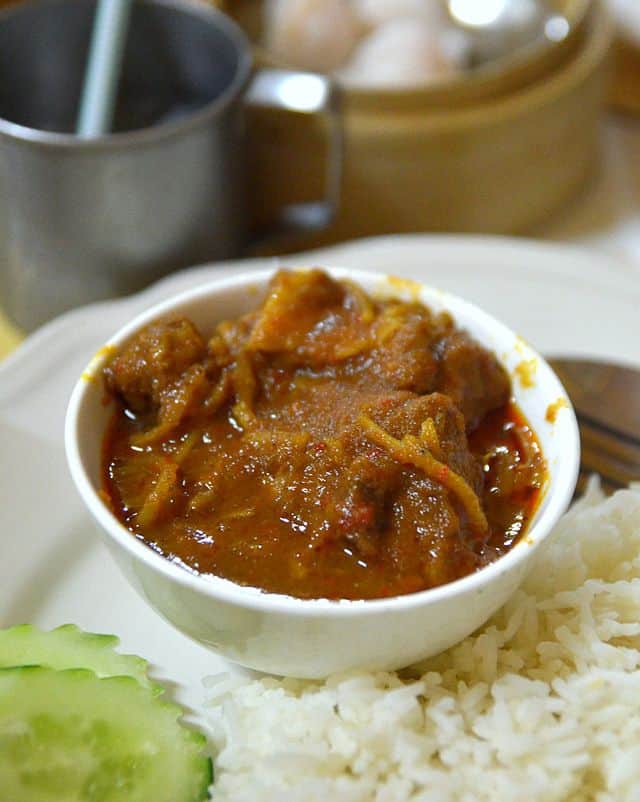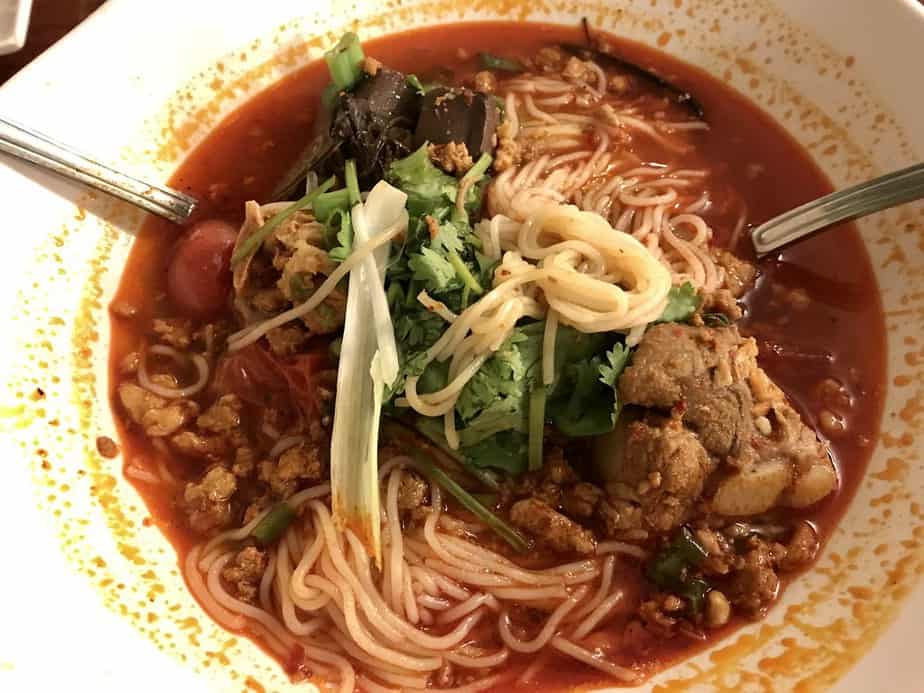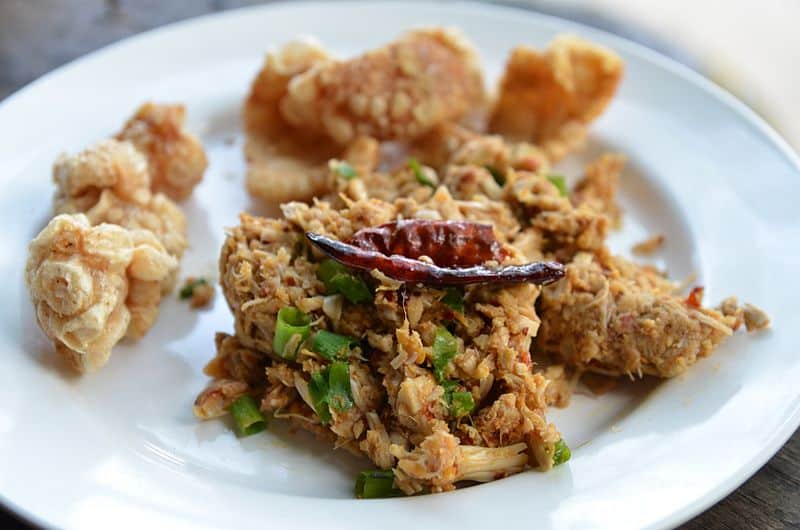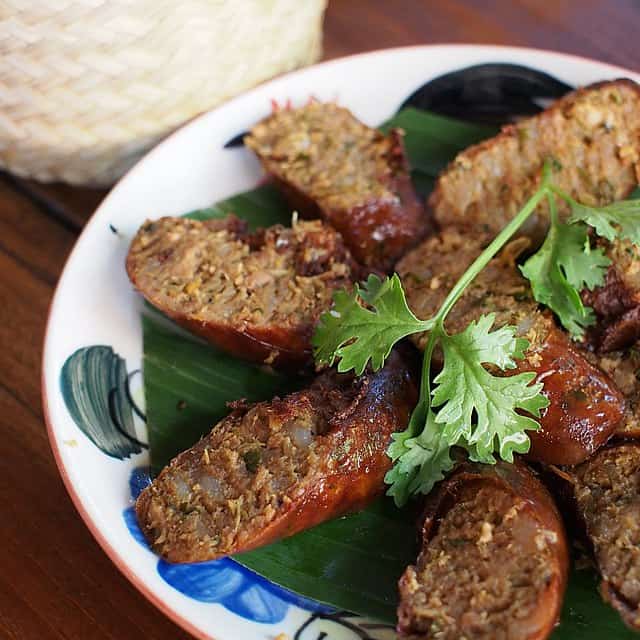Six of the Top Dishes from the North of Thailand
Thai cuisine has certainly attained global recognition in recent decades. Its popularity has continued to spread via local Thai restaurants in countries abroad, and also via the tirades of annual visitors to the SE Asian nation who have experienced a more authentic insight into it.
The term ‘Thai cuisine’ is quite a bit broader than many people may initially realise though. When you consider the different regional takes on the food of the land of Thai, there is a fair bit to delve into in terms of variations on a theme.
If you saw any of our previous posts about the most popular dishes from Bangkok, the Northeast, and the southern regions of Thailand, you’ll be aware of the variations in the cuisine from the different geographical points of the country, as well as from the cultural aspects.
Many of these variations come from the availability of local ingredients in that particular region. Other factors are cultural or economic, with specific preferences for particular flavours or styles of food and their significant ingredients being apparent across the different parts of the country.
So we know that much Thai cuisine is rice or noodle-based, and that the majority of it packs a fair punch in the spice stakes, although in different yet subtle ways.
Today though, we take a closer look at some of the variations on Thai cuisine that originate from the northern reaches of the country.
And guess what? It’s incredibly spicy!!
So you’ll need to be able to hold your own when it comes to spicy dishes if you are truly serious about sampling some of the most delicious options that the North brings to the gamut of Thai cuisine.
OK – not all of it is that spicy, but anyone worth their salt knows that the best Thai food has a certain bite to it that comes largely from the particular brand of chilies that have somehow been infused into the dish.
In fact, some of the tastiest and most popular Thai dishes originate from the north of Thailand, although they may be lesser-known to some people than a lot of the more standard and perhaps less intensely-combined dishes.
The cuisine of the North has its own various characteristics, in that it is influenced quite a bit by some of the neighbouring countries of the same region, namely Myannmar, Laos, and China.
In fact, due to its close location to these countries, the North became something of a trading point for the various cultures and flavours, along those of various hill tribes who all brought their own ideas and cooking styles into the mix.
Another major factor that has influenced the cuisine of the north of Thailand is the mountain-region climate, which is slightly cooler than the rest of the country. This cooler jungle climate produces a variety of ingredients used in local cuisine of the North that are not so common elsewhere, like various wild vegetables, mushrooms, and many of the aromatic herbs used in the dishes.
So the food of the North, known as ‘Lanna cuisine’ is characterized by its broad range of flavours and influences, many of which originate from some of the previously mentioned regions and cultures.
As the North is somewhat isolated from the influence of Bangkok and the other parts of the country, its cuisine developed in unique ways – although it does share some similar traits to some of the food from the Northeast, such as the glutinous sticky rice that is a prominent feature of many meals.
So let’s take a deeper delve into some of the more exotic and possibly lesser-known delights of Thai cuisine with the top 5 dishes from the north of Thailand.
1. Khao Soi (Noodle Soup Curry)
Here is an amazing Thai noodle soup dish made with a spicy, coconut milk, curry-based broth. Khao Soi is a rich and creamy dish packed with uncompromising flavour.
This is probably the most well-known and well-loved dishes from the regions of the North. This is a classic Northern Thai soup comprising tender braised chicken in a coconut milk curry broth, complete with both soft-boiled and crispy fried noodles.
If you are a fan of Thai curry-type dishes you will love this, although it does have a touch of uniqueness. The curry broth is made from a prik gaeng that is a blend of yellow and red curry spices.
The ingredients are slowly simmered to ensure that the flavours are fully imparted to the bulk of the dish, namely chicken drumsticks and/or thighs, and sometimes beef is an option with dish. The meat is combined with a bowl of fresh long, yellow egg noodles, which makes a nice alternative to the traditional rice or rice noodle based dishes served in Thailand.
The bowl is then topped with a handful of the delightfully of crispy noodles that are one of the main traits of this dish, along with freshly diced cilantro. It is typically accompanied by a small dish of freshly diced red onion, pickled greens, and chili paste guaranteed to blow off your head if you aren’t careful.
When you find the right balance of all the accompanying condiments though, you will find yourself with a delightful array of colours and flavours to enjoy.
2. Nam Prik Ong
Nam Prik is a kind of dip that comes in many varieties in Thai cooking. This particular type slightly resembles Bolognese sauce, and is thick, chunky tomato-based sauce loaded with minced pork.
It’s served in a small bowl, usually served alongside a larger platter comprising raw or parboiled slices of cabbage, long beans, okra, cauliflower, and eggplant. It is frequently served with fried pork cracklings called kap moo, as well as boiled eggs, and sometimes Thai sausages.
Nam Prik Ong has a garlicy taste and can range between mildly and incredibly spicy, depending on who makes it.
Although this dish can be a meal in itself, sometimes it is served as finger food or an appetizer. The vegetables are already cut up, so you just dip away with them and the sauce, and along with the other accompanying delights eat your fill.
3. Gaeng Hung Lay
Gaeng Hung Lay is another favourite Northern-style dish usually found on menus of Lanna-style restaurants.
You’ll find this at traditional celebrations and other events in the North, and it is a curry dish with something of a Myannmar and Indian influence.
It usually is made with tender pork belly, along with exotic herbs and spices such as tamarind, galangale and pickled garlic. There is no coconut milk in this curry dish, and some cooks will include chunks of pineapple to add more of a sour tang in order to balance out the fattiness of the generous amounts of large, fatty cubes of slow cooked pork belly.
The curry is a reddish brown broth not completely dissimilar to that of Khao Soi, only with the fattiness coming from the meat rather than the coconut milk. Mixed in with the meat are shreds of softened ginger and peanuts, which add subtle undercurrents to the already flavoursome broth.
The result of the mix of flavours involved in Gaeng Hung Lay is a subtle, meaty, sweet and tangy delight with an underlying spicy heat. The slow cooked dish ensures that each bite melts in your mouth.
This northern curry dish is served with either steamed jasmine rice, or sticky rice, and sometimes with kanom jeen noodles. There aren’t usually any extra accompanying condiments unless for some reason you feel the need to add a dab of chili paste, splash fish sauce, or a sprinkling of sugar from the standard display of table condiments.
4. Kanom Jeen Namya Neow
If you caught one of our previous posts on Thai street noodles, you’ll already have some idea about the fermented rice noodles Kanom Jeen that are a popular accompaniment to many Northern and Northeastern dishes in Thailand.
Needless to say, they are one of the main base components to this particular dish, as the name suggests. So with this dish you get a base of the bright white, thin and long rice noodles swimming in a dark red broth in a bowl.
The slightly pungent and oily soup part of the dish gets its red colour from the main base of tomatoes, and this contributes to the flavour of the watery broth, which has a somewhat tangy sweet and sour taste – and yes, it’s spicy.
The soup contains small pieces of slow-cooked meat – usually pork or beef (and sometimes cubes of blood) – and comes with added chopped cabbage, pickled mustard greens, crisp white bean sprouts, fresh cilantro, smoky-tasting dried chilies, and fried garlic.
The dish is usually topped off with a handful of crispy pork rinds.
5. Tum Khanun
Moving away from the curries and noodles for a minute, the next selection comes by way of a classic Northern Thai salad.
Tum khanun is quite a common dish in Northern Thailand, and is a combination of boiled and pounded jackfruit (khanun in Thai), minced pork, curry paste, kaffir lime leaves, garlic, and on occasion tomatoes, pork rinds, peanuts, and deep-fried chili and garlic.
Similar to the Isaan dish Som Tum, which uses papaya that has yet to ripen as the base of the dish, Tam Khanun is comprised of unripe jackfruit. Unlike the raw papaya in the Som Tum though, the jackfruit is boiled until soft and tender, then pounded with various seasonings before being stir fried for a short time.
The young jackfruit is apparently chosen for this dish as it has a slightly bitter taste that changes to a subtle richness when it is cooked. It is set off by the minced pork and cubes of crispy deep-fried pork fat, which in turn is complemented by the ginger, garlic, shallots, and kaffir lime leaf.
So here you’ll find another version of a Thai salad that is positively bursting with flavours. It is a blend of spicy, savoury, sweet, and sour flavours, and as this salad is often topped off with finely-chopped herbs, fried garlic, and deep-fried pork skin, then it can get even more interesting.
Tum Khanun is frequently served alongside fried or toasted dried chili peppers.
6. Sai Ooah
You can usually find some variation on the sausage theme in just about every country, and Thailand is no different on that score.
The most prominent ‘real’ sausage varieties in Thailand (rather than the processed hot dog type found on the worst of the street vendors who deep-fry them in days old oil) come from the Northeast and the North.
The general term for this type of sausage in Thai is ‘sai-krawk’. However, the type from the north of Thailand is a little different and is known as ‘sai ooah’. This can be literally translated from Thai as stuffed intestines (sai) and the local word (ooah) means ‘to stuff’.
Anyway, the sausage does contain minced pork seasoned with garlic, herbs, red curry paste and chilli, which makes it very tasty, and also gives it something of a ‘bite’ for those not normally inclined towards spicy food options.
Although it originates in the North, this is a sausage that is relatively easy to spot in any kind of outdoor (or sometimes indoor) market, and is recognisable from its colour which has a bit more of a charred red-brown (on the outside) and an orangey-yellow (inside) hue than the standard Isaan sausage.
The Isaan sausages are short and dumpy – in fact usually shorter than what might be considered a standard sausage length. The sai-ooah, on the other hand, are long, circular coils that can be easily spotted in Thai markets, at food vendors, and on menus of Northern Thai restaurants. .
As with the Isaan sausage variety, these delights are served with a small bag/dish of fresh ginger and chilies. They are often enjoyed as an appetizer, and are particularly popular with beer and whisky drinkers. Or you can enjoy them with sticky rice as an entrée.
Planning a trip to Paris ? Get ready !
These are Amazon’s best-selling travel products that you may need for coming to Paris.
Bookstore
- The best travel book : Rick Steves – Paris 2023 – Learn more here
- Fodor’s Paris 2024 – Learn more here
Travel Gear
- Venture Pal Lightweight Backpack – Learn more here
- Samsonite Winfield 2 28″ Luggage – Learn more here
- Swig Savvy’s Stainless Steel Insulated Water Bottle – Learn more here
Check Amazon’s best-seller list for the most popular travel accessories. We sometimes read this list just to find out what new travel products people are buying.



